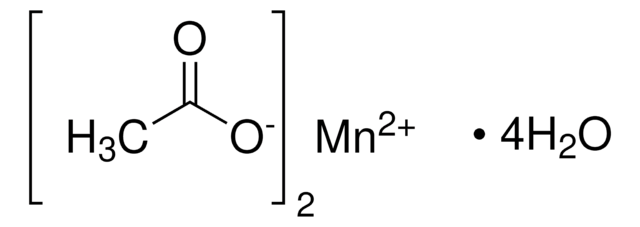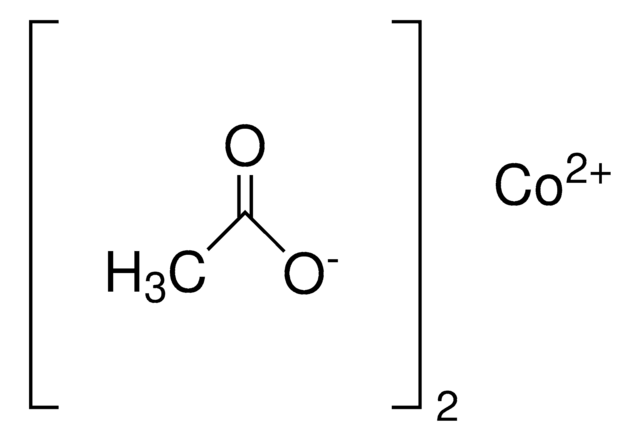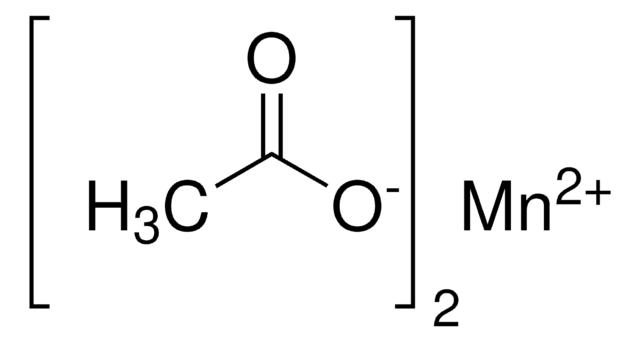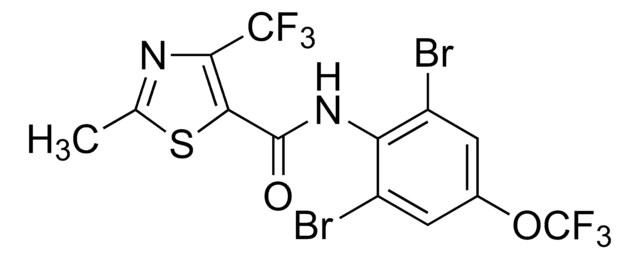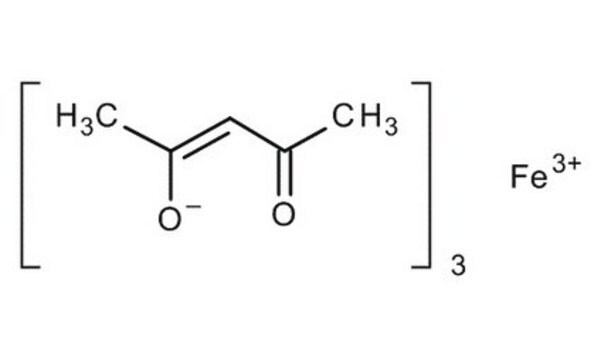推薦產品
品質等級
化驗
≥99.99% trace metals basis
形狀
solid
反應適用性
core: iron
mp
190-200 °C (dec.) (lit.)
SMILES 字串
CC(=O)O[Fe]OC(C)=O
InChI
1S/2C2H4O2.Fe/c2*1-2(3)4;/h2*1H3,(H,3,4);/q;;+2/p-2
InChI 密鑰
LNOZJRCUHSPCDZ-UHFFFAOYSA-L
尋找類似的產品? 前往 產品比較指南
一般說明
應用
- 作为前体,用于合成可用作锂离子电池和超级电容器负极材料的氧化铁和铁基纳米结构。
- 氧化铁纳米颗粒合成的前体。将这些颗粒掺入碳纳米纤维中即可用于超级电容器应用。
- 合成用于太阳能电池的赤铁矿纳米颗粒的前体。 这些纳米颗粒表现出形状依赖性光学特性,可用于成像、光催化和太阳能电池。该产品用于合成氧化铁纳米颗粒,纳米颗粒再用于形成氧化铁-聚乙二醇核壳纳米颗粒(NP)。研究人员研究了纳米颗粒在液液界面(SALI)上的自组装形成单层。
包裝
儲存類別代碼
11 - Combustible Solids
水污染物質分類(WGK)
WGK 3
閃點(°F)
Not applicable
閃點(°C)
Not applicable
個人防護裝備
dust mask type N95 (US), Eyeshields, Gloves
客戶也查看了
文章
Professor Randal Lee (University of Houston, USA) discusses design considerations for iron oxide magnetic nanospheres and nanocubes used for biosensing, including synthetic procedures, size, and shape. The effects of these variables are discussed for various volumetric-based and surface-based detection schemes.
Professor Randal Lee (University of Houston, USA) discusses design considerations for iron oxide magnetic nanospheres and nanocubes used for biosensing, including synthetic procedures, size, and shape. The effects of these variables are discussed for various volumetric-based and surface-based detection schemes.
Magnetism and magnetic materials have been of scientific interest for over 1,000 years. More recently, fundamental investigations have focused on exploring the various types of magnetic materials and understanding the magnetic effects created by electric currents.
The properties of many devices are limited by the intrinsic properties of the materials that compose them.
我們的科學家團隊在所有研究領域都有豐富的經驗,包括生命科學、材料科學、化學合成、色譜、分析等.
聯絡技術服務


